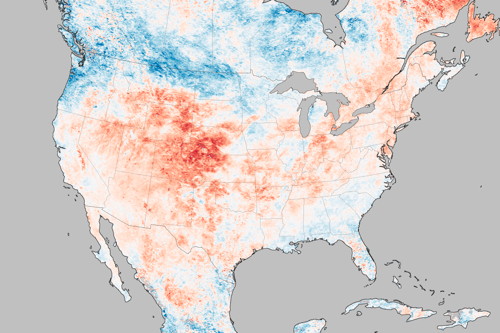
NASA Earth Observatory: “The map above shows air temperatures across the United States on September 6, 2020, when much of the Southwest roasted in a dramatic heatwave. The map was derived from the Goddard Earth Observing System (GEOS) model and represents temperatures at 2 meters (about 6.5 feet) above the ground. The darkest red areas are where the model shows temperatures surpassing 113°F (45°C).” Heat waves in southern California have become “more frequent, intense, and longer-lasting,” the article goes on to say.




